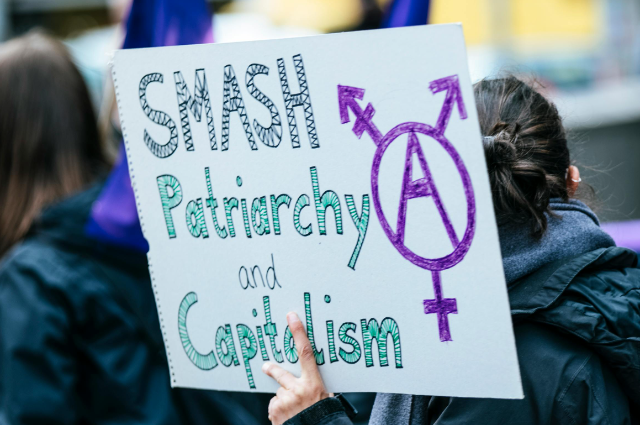
The gender pay gap is expanding, and women earn less than men, especially during the pandemic. Fewer women hold high-paying leadership positions, and many work in lower-paying jobs. Traditionally, women's work has been undervalued, leading to unequal pay for similar jobs, and this problem persists. In the textile industry, women often face economic challenges, as their work is seen as ‘unskilled.’ This article examines the attitudes and systems that keep these issues in place, ultimately harming women.
Unveiling the patriarchy in Ancient India's mining and silk industries
Before factories appeared in late nineteenth and twentieth-century urban India, textile production mainly occurred at home. Women and children were integral to the task of yarn and cloth manufacture, and the male head of the family, usually the weaver, led in this. Young women aided men, and boys trained in the trade to be of use to their fathers, while women managed most domestic activities. With many weavers leaving the villages and erstwhile craft centres for job opportunities in factories and mills in towns, women stayed put in villages and former centres of craft. This economic change strengthened the 'male breadwinner' culture, wherein historian Samita Sen argues that the male wage was something sacrosanct while the work of women was lowly regarded and deemed to be 'supplementary income.' A Punjab report at the turn of the 20th century said that ginning factories expansion and mechanization increased the output and thereby labour requirement.
However, women frequently earned only about half of what men made for performing the same work, and in many cases, ginning became regarded and compensated as ‘women’s work,’ leading to its devaluation. Male dominance could not be reduced to isolated acts of discrimination. It represented a coherent system that influenced all aspects of life, collectively and individually. Global statistics indicated that when considering both women's paid work and their domestic chores, women were “overworked” relative to men. The division of household tasks and family responsibilities made visible through feminist advocacy reflected a social framework based on a sexual division of labour, where women were expected to naturally focus on the domestic and private realm while men engaged in productive and public endeavours.
This division was far from being “complementary” and had created a hierarchy of activities that assigned high value to “masculine” tasks and low value to “feminine” ones. There had never been a situation of true equality. The vast majority of women had consistently balanced both productive activities (in a broad sense) and various household duties. But within days of giving birth, most young women were about as least prepared as their new husbands. However, they were psychologically better prepared to face this new challenge and were already tasked with possessing skills which they hadn't learned before.
Businesses exploit women as they pay them less than men, take away the social welfare responsibilities of the state from the family, and push women back into the domestic sphere when their work is no longer needed. In the 19th century, many male weavers left Lucknow, and women had to seek low-paid employment in chikan embroidery. Women were regarded largely as homemakers. Although capitalists recognized the utility of working women, they also underlined the fact that women's natural place was at home. With large factories replacing small-scale production, the distinction between work and home became clearer, putting all household chores on women's shoulders. This perception only created negative attitudes toward women in the workforce. Awareness of the relationship between capitalism and patriarchy is therefore a key step to rectifying gender inequality at work.
The interplay between capitalism and gender dynamics in the Ancient Indian Textile industry
Capitalism does not only sustain existing structures of oppression, such as patriarchy but also increases its main components. Capitalism needs profit, so it focuses on the exploitation of women, who are usually less paid than men, to meet increased demands. This change puts the social welfare burden on families, not the state, and is forcing women back into traditional roles once the state no longer needs the labour. In cities like Lucknow, the decline of male weavers in the 19th century forced many women into low-wage jobs in chikan embroidery, which later became a major source of income for poor families. Despite these contributions, women remained in homemaker roles espoused by patriarchal standards.
Capitalists were cognizant of the value of a working woman to their economic systems but, at the same time, helped maintain the ideal of domesticity in the form of mothers who would nurture future labourers. The shift from small-scale to large-scale industrial capitalism established an intense distinction between work and home. This shift relegated women's activities outside the home to the periphery, portraying them as being responsible for the household. The perception of the housewife by the bourgeoisie further led to the general public's detestation of women who were forced to work to earn a living. This situation shows how capitalist development and patriarchal domination are interlinked, and hence, it is necessary to understand this relationship to tackle the larger problem of gender discrimination at work.
Conclusion
The history of women during the colonial period reveals a track record that is quite disturbing-they were marginalized and undervalued, especially about patriarchal norms. Even though upper-class activists were able to challenge these standards somewhat in the late 19th and early 20th centuries, working-class women were ignored and taken advantage of. This devaluation of their skills and low wages reflects a systemic problem that emanates from historical oppression. To effectively address the contemporary wage gap, we have to recognize and confront historical injustices. The continuity of the colonial patriarchal attitude in which women's work is considered less skilled is also a major obstacle. So, this raises crucial questions about the feasibility of women's liberation under a capitalist system. For this reason, it becomes important to combine the struggle against patriarchal oppression with the struggle against capitalist exploitation. Only through such collective effort is a society for all women truly empowered to aspire toward equity.
